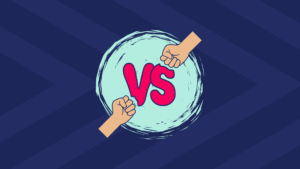Did you know that at least 1 in 5 people in the UK have a long-term illness, impairment or disability? For many, that makes navigating the web difficult or uncomfortable. This is why digital accessibility is so important.
What is WCAG and why should you care?
WCAG (Web Content Accessibility Guidelines) is a set of recommendations for websites and apps designed to make content more accessible, so users don’t have to adapt it themselves or miss out entirely.
WCAG shifted in 2018 when accessibility regulations became mandatory for all public sector websites and apps. These build on the Equality Act 2010 and the Disability Discrimination Act 1995 (in Northern Ireland).
We wanted to chat with one of our university partners about their thoughts, so we spoke with Ben Watson, Head of Digital Accessibility at University College London to find out more.
“Universities should take accessibility very seriously because it underpins inclusivity and diversity, allowing all students to fully participate in academic and campus life,” he explains. “Accessible digital environments support student success and well-being and drive innovation in teaching methods, technology, and campus design, benefiting all students. Prioritising accessibility creates a more equitable and supportive environment, ensuring that all students have the opportunity to thrive. This includes adhering to the Public Sector Bodies (Websites and Mobile Applications) (No. 2) Accessibility Regulations 2018 and the European Accessibility Act (EAA), which set standards for accessibility in digital and physical environments.”
Still, even with these rules in place, accessibility remains a challenge we see universities grappling with every day.
Compliant to an AA standard, straight out of the box
We are super proud of the way Vepple is built. Accessibility isn’t something we bolt on at the end. It’s baked in from the start and that’s why Vepple is WCAG 2.2 AA standard from the get go. Once a university starts personalising the experience, some of the accessibility becomes a shared responsibility (for example, adding your own colour schemes). We’ll always do our bit to flag to customers when something isn’t quite up to scratch so they can make edits with everyone in mind.
We also know from talking to our customers that Vepple has passed multiple accessibility audits, so we know with confidence that we’re fully compliant and that’s big.
Unfortunately, WCAG is often seen as a legal hurdle. But to us, it’s just good design. We want to make something that works well for everyone. Not just those with specific needs, but all of us, navigating the web in our own way. It’s not about ticking the boxes (although it is that too), we have spent time asking what would actually help someone use this platform to inform their study choices?

Going above expectations with Accessible Mode
That’s why we built Accessible Mode. When switched on, it’ll make sure certain features are applied by default, saving users time and sparing them frustrations. These features include:
-
- Pausing background videos
-
- Disabling pulse animations
-
- Automatically enabling transcripts and audio description on videos
-
- Offering no-gesture alternate controls by default in our content viewer
You can share and activate Accessible Mode from a link which makes it ideal for sharing with specific individuals who might benefit from this setup. For example, if you have a list of offer holders who require additional accessibility tools, you can send the link directly to them, and Accessible Mode will be automatically applied, saving them time and keeping their experience smooth.
No end in sight
Making Vepple work for more people isn’t a one-off project – it’s part of who we are in our Vepple-y core. We’re always planning what’s next, so if you have a feature request, our ears are flapping, eager to build something that helps. Let us know at hello@vepple.com.
TL;DR: Is Vepple accessible? Absolutely.
But we’re just getting started.


